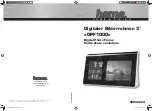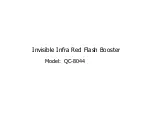
13
•
An SD card is used to collect the images from the Electronic Control Unit (ECU) of the STSK360 system as well
as to move the calibration file from the computer to the ECU.
•
Once images are collected by the end user, they are to be delivered to a Rosco engineer. The engineer will
perform calibration and then provide a complete calibration file to be uploaded to the ECU via SD Card and
calibration module.
Before You Get Started
•
If possible, it is best to collect calibration images inside.
•
If calibrating outside, calibration is best performed when it is not raining, but not in direct sunlight (slight
overcast is best).
•
For best possible calibration, ground under and around vehicle should be level and even.
•
For best possible calibration, area around vehicle should be clear of obstruction for at least 12 feet in all
directions.
•
DO NOT MAKE ANY ADJUSTMENTS TO CAMERA PLACEMENT AFTER CALIBRATION. If camera placement is
changed, calibration is no longer valid.
•
NEVER press the “R” or “M” buttons on the Calibration Module.
•
NEVER adjust DIP switches on ECU.
•
If SD card has a
lock switch, make sure that switch is in the “unlocked” position
Setting Up
•
Park vehicle in an area with a minimum of 12 feet of clearance on all sides.
•
Arrange calibration patterns in front and rear of vehicle.
o
Patterns should be parallel to front and rear bumpers of vehicle.
o
Triangle side (line) should be parallel to bumpers, angle should point AWAY from front and rear of
vehicle (see image on next page)
o
Bottom edge of pattern should be aligned with bumper of vehicle or tip of camera (whichever
protrudes further).
o
Measure distance between patterns on either side of vehicle to ensure patterns are parallel to one
another. A difference equal to 2% of overall vehicle length is acceptable.
o
Place weights on patterns to keep them in place. Long poles (such as conduit pipe) may be placed
through loops along edge of patterns or weights may be placed on white parts of pattern. Do not
allow weights to interfere with edges of triangles or boxes on patterns.
o
Make sure patterns are free of wrinkles and that edges of triangles appear straight.
o
If it is necessary that a certain area be visible on the 360 system (e.g. 10’ perimeter in all directions),
then place an object (pylon, cone, FMVSS cylinder, chair, etc.) at the required distance in all
directions. It is critical that any such object DOES NOT interfere with calibration patterns.
Summary of Contents for Vision SAFE-T-SCOPE 360
Page 17: ...17 Figure 2 Rear Camera View Figure 3 Right Camera View ...
Page 18: ...18 Figure 4 Left Camera View ...
Page 25: ...25 Application Notes System Overview ...
Page 26: ...26 Generic Installation with Monitor ...
Page 27: ...27 Generic Installation with Monitor and DVR ...
Page 28: ...28 ...













































